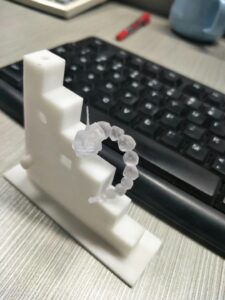The age of a progression of firmly divided 2D cross-segments of a 3D object is known as cutting. By and large, the client can indicate the Z-thickness of the cut. Run of the mill thickness is 0.006 in. This is consistently an inexact cycle. The principle blunder related with this is the flight of stairs mistake in light of the fact that the surface completion in the Z-heading won’t be acceptable.
After the STL part is appropriately situated and situated, the client at that point cuts the part into layers. Customized structural steel laser cutting robot machine suppliers china shows the cut document for the main direction of the cone. After the part is cut, it naturally produces the help structure, as most RP programming does. For the main direction of the cone, five layers of help material were produced under the base of the cone. Five layers is the machine default so as to permit the part not exclusively to hold tight to the plastic sheet in the FDM machine, yet in addition to permit the part to be handily isolated from the plastic sheet after the manufacture is finished. Figure 6.25 shows a similar cone pivoted 180° with the goal that it is perched on its point. In the event that the client needed to fabricate the cone in the reversed direction, out of the blue, the product gives the client the capacity to assign other help options. One model is exemplify the part in help material to hold it set up. Figure 6.26 shows the help material encompassing the part. The drawback to this choice is the fabricate time. Since there is uphold material being stored on each layer of the manufacture, this will be the longest form time contrasted with the work with the cone sitting on its base.
After the direction and the help choice have been made, the client at that point decides the toolpath that the machine will use to fabricate each layer. The toolpath permits an incredible assortment of alternatives to the client relying upon completed part quality, form time, or weight and surface completion. Probably the greatest variable is the direction of the toolpath. The product permits the client to set the direction in each layer. For a more isotropic part, it naturally sets the layers to a +45° direction with the outside limit bend. This toolpath determination can be found in Figures 6.27 and 6.28. It likewise has the ability to produce a”hollow” part by making a toolpath with bigger air holes in the center that shapes a work like inside. This inadequate fill, as it is called, significantly diminishes material utilized, which thusly speeds up the part as appeared in Figure 6.29.
CNC machining in china shows a plane guide to be cut with Insight. The upstanding direction will nudge uce better surface quality on the wing structures yet will bring about a more drawn out form time.
China sheet metal prototyping manufacturers shows the aftereffect of cutting the STL record at the chose layer thickness. The STL document vanishes, however might be redisplayed if important. Each layer is a cross-segment of the inside and outside limit and one can see a solitary layer, a gathering of layers, or all layers in any direction. Rapid machining services show two diverse form examples of the cross-segment of the plane through the wing area, strong form, and scanty form. Figure 6.34 shows the aftereffect of utilizing the help generator.
Table 6.2 shows the FDM machine’s tip sizes and cut thicknesses with their particular default toolpath widths just as their base and most extreme toolpath widths. The speed of the drive wheels can control the progression of material making a scope of toolpath widths. The default toolpath widths may bring about unfilled territories as appeared in Figure 6.35. As this is a printer part that should have been utilized as a practical model, the gap was to be reamed out to an exact size however with the hole, the middle would break out, making it unusable. Inside Insight, the client can make custom gatherings of toolpath boundaries as appeared in Figure 6.36 to accomplish the best possible fills empowering them to ream the gap and utilize the part as an utilitarian model. Figure 6.37 shows the outcomes.
After the help and toolpath are characterized, the area and direction of the model to be fabricated ought to be arranged. Figure 6.38 shows the area of the plane to be constructed. The client can move the position and direction of the model inside the construct chamber. Various parts can be manufactured all the while.
This article is from http://www.prototypechina.com
